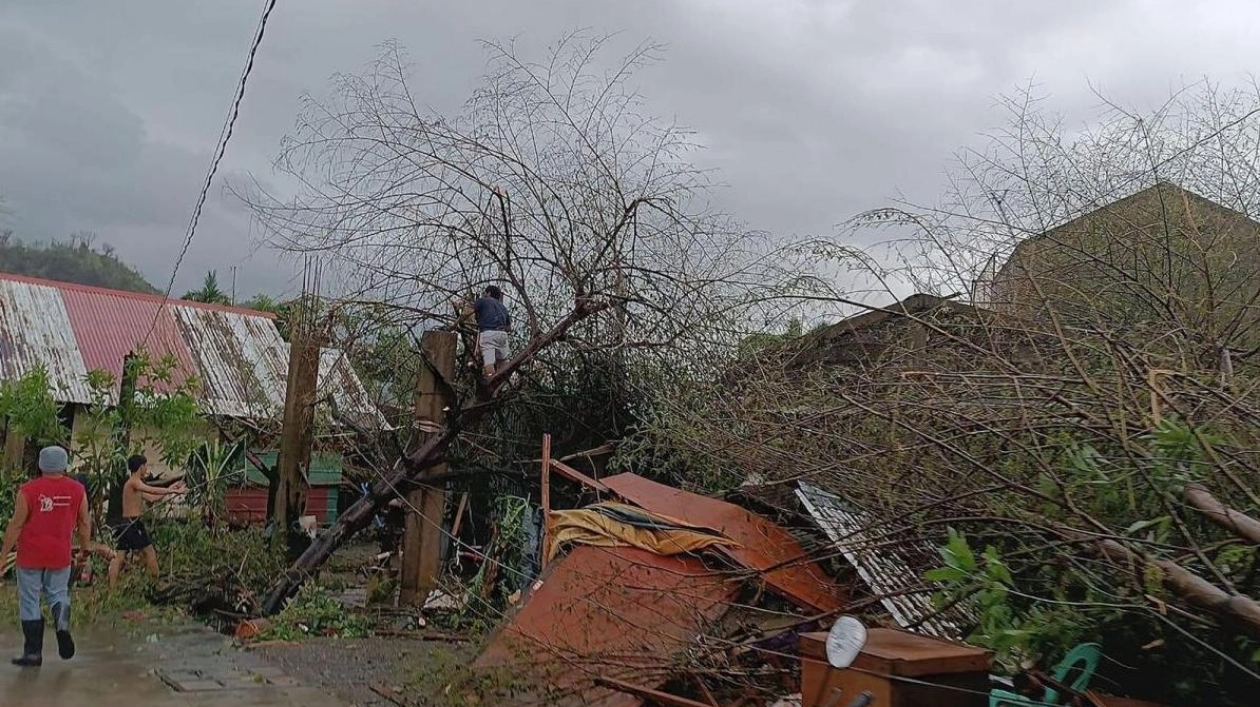Damaged houses in Virac, Catanduanes province, after Super Typhoon Man-Yi struck. – AFP
Super Typhoon Man-Yi wreaked havoc across the Philippines on Sunday, uprooting trees, downing power lines, and tearing off corrugated iron roofing, following a series of extreme weather events. With maximum sustained winds of 185 kilometres per hour, Man-Yi made landfall on sparsely populated Catanduanes island late Saturday. Over 650,000 people evacuated their homes in anticipation of the storm, as the national weather service issued warnings of a 'potentially catastrophic and life-threatening' impact.
'There have been no reported casualties, possibly because people heeded the evacuation orders,' said Catanduanes provincial disaster operations chief Roberto Monterola in an interview with AFP on Sunday, as cleanup efforts commenced on the island. 'All the towns sustained damage, but we anticipate more issues in the north. It's just a breeze and a drizzle now.'
Man-Yi is forecasted to weaken slightly into a typhoon before striking Luzon, the country's most populous island and economic hub, on Sunday afternoon. Panganiban municipality in northeast Catanduanes bore the brunt of Man-Yi. Photos shared on Mayor Cesar Robles' Facebook page depicted toppled power lines, damaged houses, and debris scattered across roads.
'Pepito was incredibly strong; I have never experienced a typhoon this powerful,' Robles remarked, referring to Man-Yi by its local name. 'It is still somewhat unsafe due to sporadic gusts of wind and numerous debris.'
Man-Yi marks the sixth storm to hit the archipelago nation in the past month, following previous storms that claimed at least 163 lives, displaced thousands, and devastated crops and livestock. Climate change is intensifying storm severity, resulting in heavier rains, flash floods, and stronger gusts.
Approximately 20 major storms and typhoons strike the Southeast Asian nation or its surrounding waters annually, causing numerous fatalities. However, it is uncommon for multiple such weather events to occur within a short timeframe. Robert Tancino, a government ambulance driver in Tiwi municipality in Albay province, which borders Catanduanes, reported that his area seemed largely unaffected.
'Not many trees fell, and the roads are clear. I did not observe any damage to the houses here,' Tancino told AFP.
On its current path, Man-Yi is expected to pass north of Manila and move across the South China Sea on Monday. Man-Yi's arrival in the Philippines came late in the typhoon season, as most cyclones develop between July and October. Earlier this month, four storms converged simultaneously in the Pacific basin, a phenomenon the Japan Meteorological Agency noted was the first of its kind in November since records began in 1951.
Source link: https://www.khaleejtimes.com






